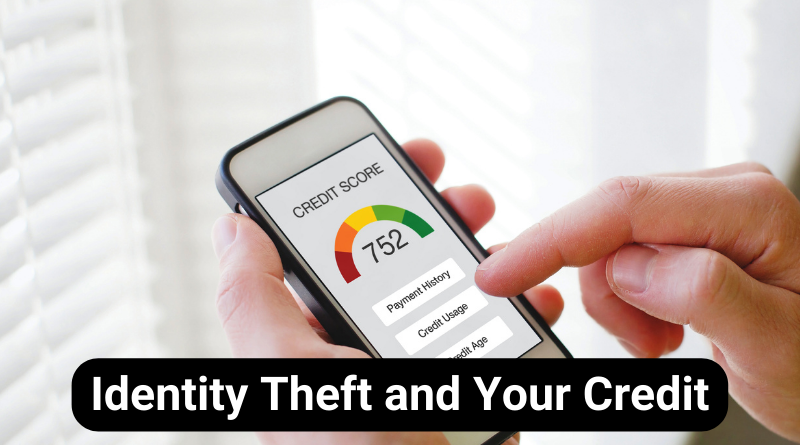What to Do If You Are a Victim of Identity Theft and Your Credit Is Affected
1. Introduction
Identity theft occurs when someone steals your personal information to commit fraud, often resulting in damage to your credit. This can lead to financial loss, declined credit applications, and long-term stress. Acting quickly is crucial to mitigate the harm. In this guide, we’ll outline the steps to recover from identity theft, repair your credit, and protect yourself in the future.

2. Recognize the Signs of Identity Theft
Unusual Credit Activity
- Check your credit reports and financial accounts for unexpected inquiries, such as applications for loans or credit cards that you didn’t initiate.
Unauthorized Transactions
- Look for charges, withdrawals, or purchases on your bank or credit card statements that you don’t recognize.
Declined Credit Applications
- If your credit applications are denied despite having good credit, it may indicate unauthorized activity affecting your credit score.
Suspicious Bills or Notices
- Receiving bills for accounts or services you didn’t sign up for is a red flag. For example, bills from utility companies in your name for addresses you don’t recognize.
3. Immediate Actions to Take
1. Place a Fraud Alert
- Contact one of the three major credit bureaus (Equifax, Experian, TransUnion) to request a fraud alert. The bureau you contact will notify the other two.
- A fraud alert notifies lenders to verify your identity before opening new accounts.
2. Freeze Your Credit
- A credit freeze prevents new accounts from being opened in your name, even if someone has your information.
- Contact each credit bureau individually to request a freeze. This is free and doesn’t affect your existing accounts.
3. Notify Your Financial Institutions
- Inform your bank and credit card companies of any unauthorized activity. They may freeze your accounts, issue new cards, or reverse fraudulent charges.
4. File a Police Report
- File a police report in your local jurisdiction. Provide evidence, such as fraudulent bills or transactions. This report may be required when disputing charges or correcting errors on your credit report.
4. Investigate and Correct the Damage
1. Get Your Credit Reports
- Visit AnnualCreditReport.com to request free credit reports from Equifax, Experian, and TransUnion. Check all reports for discrepancies.
2. Identify Fraudulent Accounts
- Review the reports to identify accounts or transactions you didn’t authorize. Highlight anything suspicious for follow-up.
3. Dispute Errors
- Contact the credit bureaus to file disputes for fraudulent accounts or incorrect information. Provide supporting documentation, such as the police report or proof of identity theft.
4. Work With Creditors
- Notify creditors of fraudulent accounts directly. They may require you to complete an affidavit of identity theft and provide copies of your police report.
5. Report Identity Theft to Authorities
1. Federal Trade Commission (FTC)
- File a report at IdentityTheft.gov. The FTC will generate a recovery plan and provide you with a personalized checklist of steps.
2. Local Law Enforcement
- File a police report with your local authorities. This creates an official record of the theft, which may be necessary for certain disputes or legal actions.
6. Protect Yourself From Future Identity Theft
1. Monitor Your Credit
- Sign up for a credit monitoring service to receive alerts about changes to your credit reports or suspicious activity.
2. Strengthen Your Online Security
- Use strong, unique passwords for all accounts and enable two-factor authentication where possible. Avoid using public Wi-Fi for financial transactions.
3. Be Wary of Phishing Scams
- Never share personal information via phone, email, or text unless you have verified the sender’s identity. Phishing scams often impersonate legitimate institutions.
4. Shred Sensitive Documents
- Shred old bills, bank statements, and other documents containing personal information before discarding them to prevent dumpster diving by thieves.
7. Seek Professional Help
Credit Counselors
- Work with certified credit counselors to develop a plan for repairing your credit and managing your finances after identity theft.
Identity Theft Protection Services
- Consider subscribing to identity theft protection services like LifeLock or IdentityGuard. These services monitor your credit, alert you to suspicious activity, and provide recovery assistance.
8. Conclusion
Recovering from identity theft requires immediate action and a thorough approach. By recognizing the signs, taking swift steps to secure your accounts, and disputing fraudulent activity, you can regain control of your credit. Prevention is equally important—monitor your credit regularly, secure your personal information, and stay vigilant against scams. If the process feels overwhelming, don’t hesitate to seek help from professionals. Protecting your identity and credit ensures a safer financial future.


